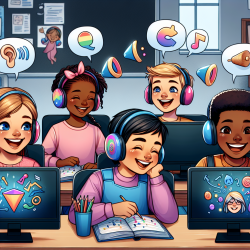Welcome to the Future of School Therapy: Virtual Solutions
In today’s fast-paced educational environment, ensuring every student receives the attention and support they need can be challenging. Enter virtual therapy—a modern solution that brings expert services directly to your schools, no matter where you are. As superintendents, you play a crucial role in shaping the future of your students. Let’s explore how virtual therapy can be a game-changer for your district.
What is Virtual Therapy?
Virtual therapy, also known as telepractice, is the delivery of therapeutic services via digital platforms. This innovative approach allows students to receive specialized care, such as speech and language therapy, through video conferencing tools. It’s a flexible, accessible, and efficient way to ensure all students, especially those with Individualized Education Programs (IEPs), receive the support they need.
Benefits of Virtual Therapy for Schools
- Accessibility: Virtual therapy breaks geographical barriers, bringing expert therapists to schools in remote or underserved areas.
- Consistency: Regular sessions can be maintained without the disruption of travel or therapist shortages.
- Cost-Effective: Reduces the need for physical space and transportation, allowing budget reallocation to other critical areas.
- Data-Driven Decisions: Digital platforms often include tracking and reporting features, allowing for precise monitoring of student progress and outcomes.
Implementing Virtual Therapy in Your Schools
Transitioning to virtual therapy requires careful planning and collaboration. Here are some steps to consider:
- Assess Needs: Identify the specific needs of your students and how virtual therapy can address them.
- Choose the Right Partner: Work with reputable providers like TinyEYE, who offer specialized and customizable services.
- Engage Stakeholders: Involve teachers, parents, and students in the planning process to ensure a smooth transition.
- Monitor and Evaluate: Use data to track progress and make informed decisions about program adjustments.
Success Stories: Virtual Therapy in Action
Many schools have already embraced virtual therapy with remarkable results. For example, districts have reported improved student engagement and outcomes, thanks to the personalized and consistent support provided through online platforms. Students with IEPs, in particular, have benefited from the tailored approach that virtual therapy offers.
Conclusion: A New Era of Educational Support
Virtual therapy represents a significant shift in how we think about educational support. By leveraging technology, schools can provide high-quality, individualized care to every student, fostering an inclusive and thriving learning environment. As superintendents, your role in championing these innovations is vital to creating positive outcomes for all children.
For more information on how TinyEYE can support your schools, visit our website or contact us today.










